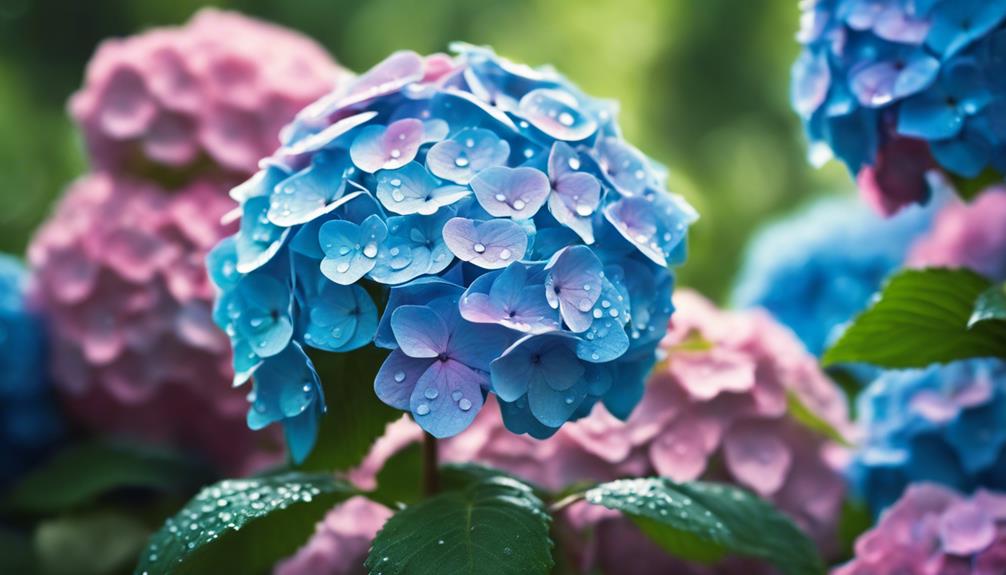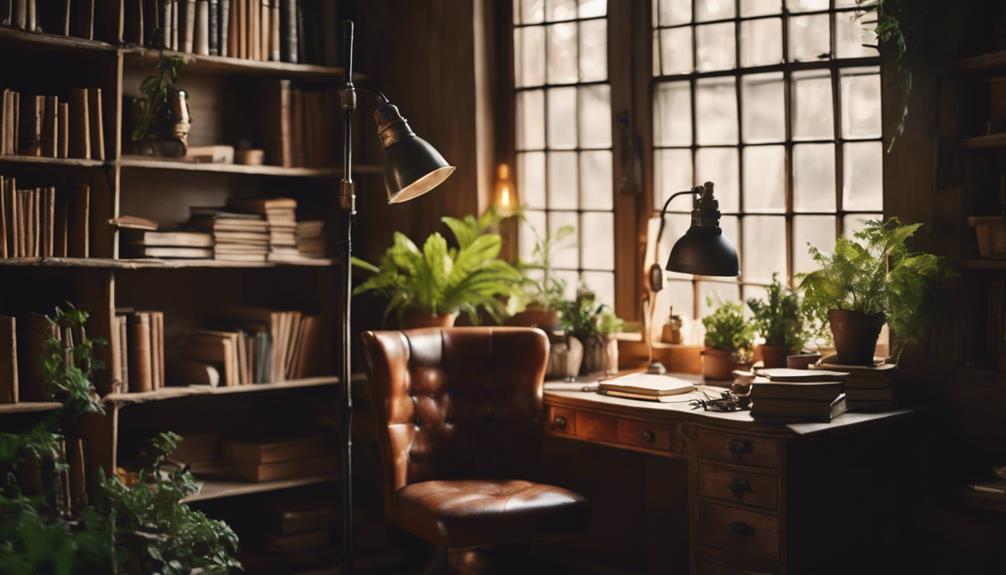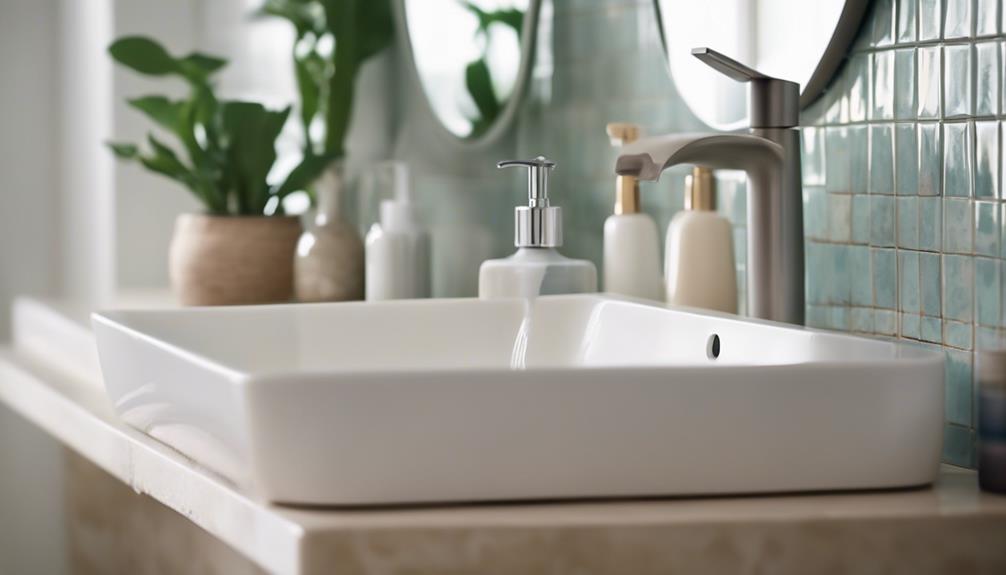Hydrangea art is so stunningly realistic that it might fool you into thinking it's real. Artists use meticulous layering techniques and a carefully curated color palette to capture every nuance of hydrangea petals. They focus on transparency and volume to create depth, making the flowers come alive on canvas. You'll see vibrant colors and delicate details that evoke emotion and beauty. It's the combination of skill and the flower's inherent charm that makes the artwork irresistible. If you're curious about how to achieve such lifelike results, there's plenty more to explore about the techniques and materials involved.
Key Takeaways
- Lifelike hydrangea art captures vibrant colors and intricate details, mimicking real petals' transparency and volume.
- Meticulous layering techniques enhance depth, making the flowers appear three-dimensional and inviting interaction.
- The careful blending of colors maintains realism, drawing viewers in with lifelike highlights and shadows.
- Artists often reference real hydrangeas, ensuring accuracy in color and shape for an authentic appearance.
- The emotional allure of hydrangeas, combined with artistic skill, evokes a desire to nurture and care for the artwork.
The Allure of Hydrangea Art
The allure of hydrangea art lies in its vibrant colors and intricate details that draw you in and evoke a sense of wonder. As you observe these stunning blooms, you'll notice how their hues shift depending on soil pH, offering a rich, diverse palette that artists can explore. This unique characteristic invites you to imagine the possibilities, moving forward with your artistic endeavors.
Artists often focus on the transparency and volume of hydrangea petals, employing meticulous layering techniques to create that lifelike three-dimensional effect. You can almost feel the delicate texture and weight of each bloom as the light plays across the petals, emphasizing depth through careful attention to tonal values.
When you look at hydrangea art, it's not just about the colors; it's also about the emotional response it stirs within you. The soft, gentle nature of the flowers can evoke memories or feelings that make you want to come back for another look. This enchanting blend of complexity and beauty makes hydrangea art an irresistible subject for both artists and admirers alike.
Essential Materials for Painting
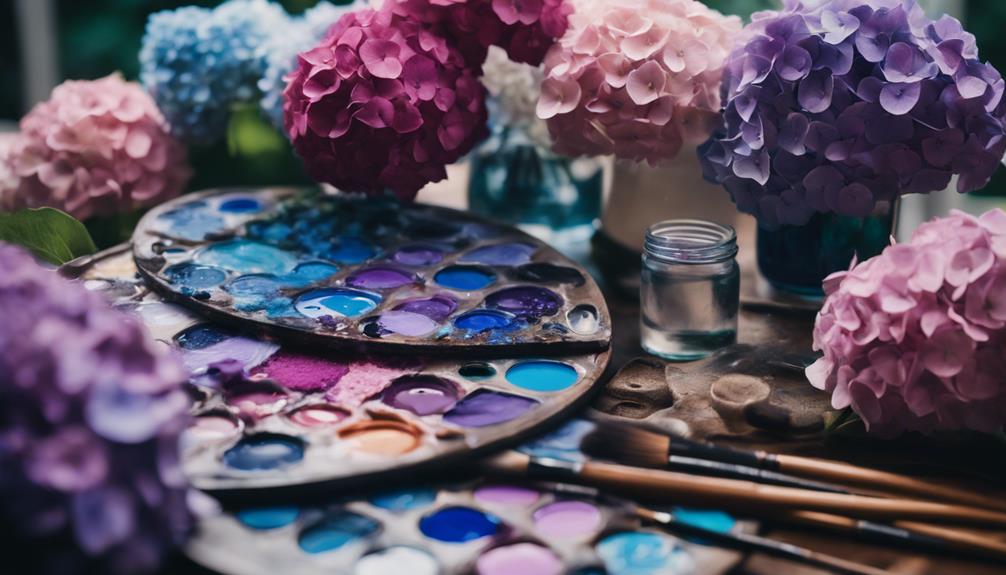
Starting your hydrangea painting requires essential materials that set the foundation for capturing the flowers' beauty and detail.
First, you'll need to create an outline drawing of the hydrangea. This step is vital for establishing the composition and ensuring accurate proportions before you begin painting.
Next, assemble a carefully curated color palette. Using permanent rose and manganese violet will help you replicate the vibrant hues of hydrangea petals. Don't forget to include transparent yellow for highlighting the edges of the petals, adding depth and dimension to your artwork.
Lastly, invest in high-quality brushes, particularly fine ones. They'll allow you to apply water precisely and paint individual petals with the necessary detail and control. An eraser will also come in handy for removing excess graphite from your initial outline, ensuring a clean surface that enhances clarity during the painting process.
Here's a quick checklist of what you'll need:
- Outline drawing tools (pencil and paper)
- Color palette (permanent rose, manganese violet, and transparent yellow)
- High-quality brushes and an eraser
With these materials, you're ready to bring your hydrangea painting to life!
Mastering Initial Painting Techniques
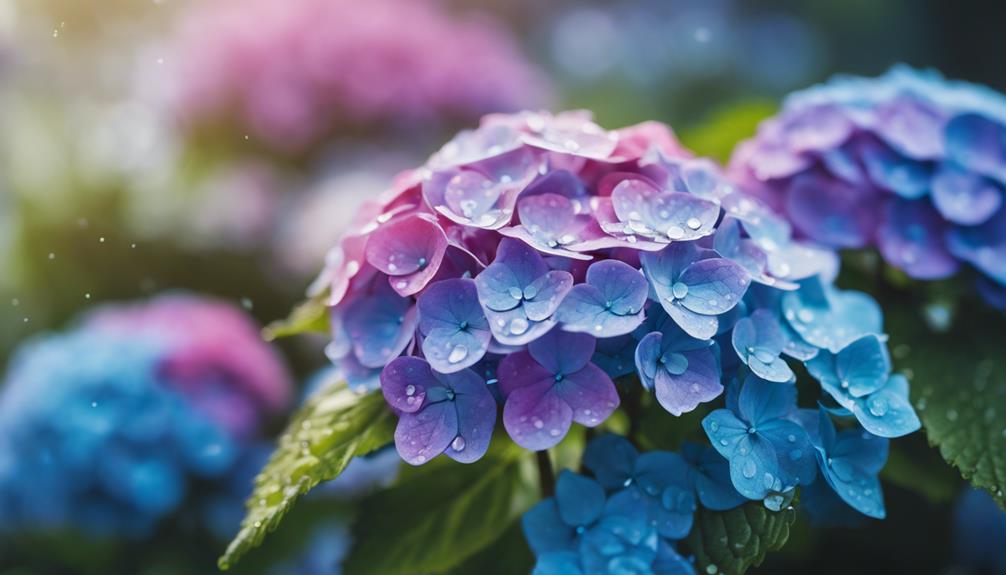
To master initial painting techniques for hydrangeas, you'll start by painting each petal individually with a fine brush for precise control.
Layering is key—begin with darker areas and gradually blend into lighter edges to achieve realism.
Don't forget to mix your colors carefully, ensuring each tone contributes to the depth of your artwork.
Individual Petal Technique
When painting hydrangea petals, applying water with a fine brush helps control the flow and prevents over-saturation, guaranteeing each petal stands out beautifully. To achieve that lifelike quality, focus on a few key techniques.
Start Dark, Then Light: Begin by painting the darker areas of the petals first. This allows you to establish depth before gradually moving to lighter edges, creating a smooth shift in color.
Use Transparent Layers: Apply transparent layers to maintain the lightness of the petals. This technique lets you build up tonal values gradually, adding realism and volume to your artwork.
Skip Petals: Avoid painting all petals at once. By skipping some during the process, you prevent disturbing the edges of completed petals, resulting in a more refined final appearance.
Remember to regularly check your reference for accuracy in color and shape. This attention to detail guarantees that each petal retains its lifelike quality throughout your painting process.
With these techniques, you'll be well on your way to mastering the individual petal technique and creating stunning hydrangea art.
Layering for Realism
Mastering layering techniques is essential for achieving realism in your hydrangea paintings, as it allows you to build depth and dimension with each stroke.
Start by painting each petal individually, applying water with a fine brush to control the edges and maintain clarity. Focus on the darker areas of the petals first, then gradually layer lighter colors to create smooth shifts. This method helps you avoid muddiness, guaranteeing that each hue stands out.
Use transparent layers to build tonal values, allowing the lightness and depth to shine through while preserving the essential transparency that gives the petals their volume. Regularly refer to your source material to verify accurate color and shape; patience is key as you gradually add detail to achieve a lifelike effect.
Remember to take breaks to maintain your focus and control, which will help you apply paint smoothly. This practice will also prevent over-saturation of colors, keeping your work vibrant and true to life.
Color Mixing Precision
Achieving color mixing precision is key to enhancing the realism of your hydrangea paintings, allowing you to create the vibrant hues that bring each petal to life.
Start by testing combinations of permanent rose and manganese violet on paper. This practice guarantees you hit the right hue and tone before applying them to your artwork.
Here are three essential tips to guide you:
- Incorporate Transparent Yellow: Add transparent yellow to your palette to create highlights on the edges of petals. This will enhance the three-dimensional effect of your painting.
- Layering Technique: When painting petals, begin with darker shades and gradually layer lighter colors. This approach guarantees smooth shifts that mimic the natural variations in petal color.
- Controlled Water Application: Use a fine brush to apply water carefully, preserving the integrity of each petal while allowing for delicate blending of colors.
The Art of Layering
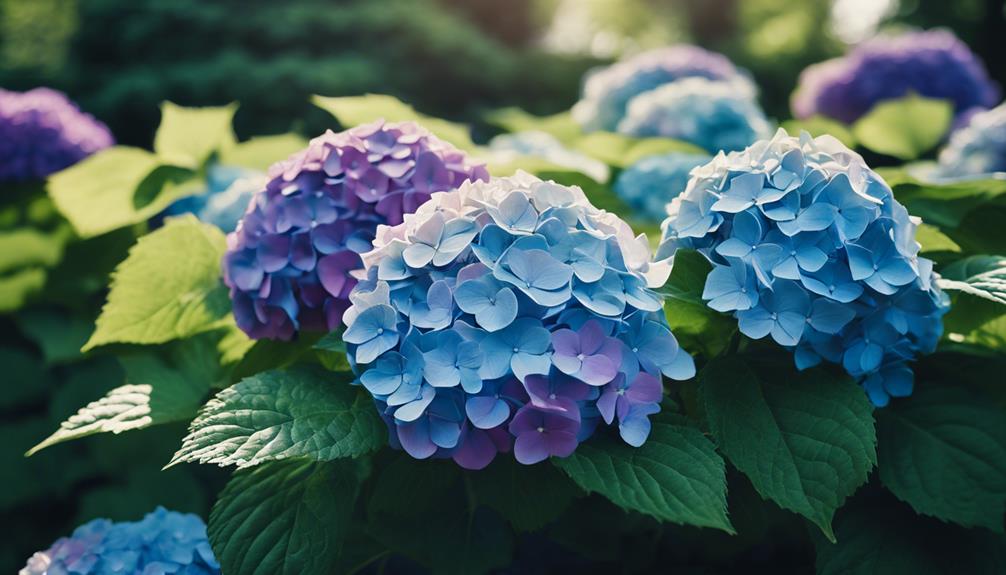
Layering in hydrangea painting involves gradually building tonal values, starting with darker shades to create depth before adding lighter edges for a realistic finish.
You'll want to apply transparent layers, as they're essential for maintaining lightness and achieving a sense of volume. This technique allows the underlying colors to influence the final appearance, giving your hydrangeas that three-dimensional look.
As you paint, consider skipping petals during the process. This tactic helps prevent disturbing already painted edges, ensuring cleaner and more defined lines throughout your artwork.
Regularly checking your references is important, too, as it keeps you accurate in color and shape, enhancing the overall realism of your hydrangea.
Taking breaks during the layering process can be beneficial as well. It helps you maintain focus and control, preventing over-saturation and allowing you to make subtle adjustments effectively.
Adding Details and Contrast
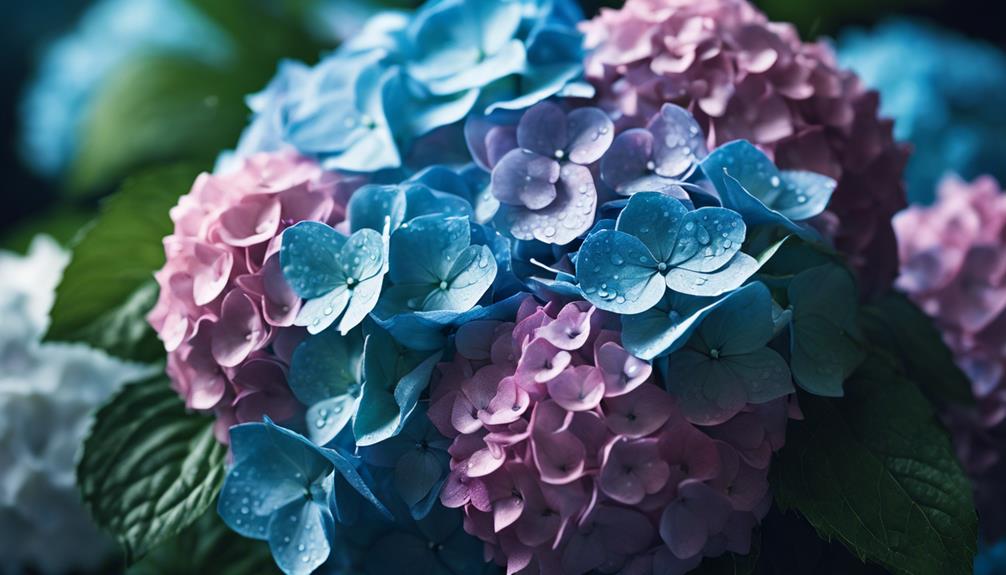
To bring your hydrangeas to life, gradually introduce contrast in the darker areas while carefully defining edge lines and cast shadows. This technique creates depth, enhancing the lifelike quality of your artwork. Focus on layering transparent colors to build tonal values progressively, which is essential for achieving the flower's volume.
Here are three tips to enhance your detailing and contrast:
- Maintain Balance: Use subtle adjustments to keep your colors vibrant without becoming over-saturated. This balance helps retain the transparency of the petals.
- Take Breaks: Don't hesitate to step back during your painting process. Taking breaks allows you to better observe and adjust the details, confirming you're capturing the essence of the hydrangea.
- Check References: Regularly consult reference images for accurate color and shape. This practice helps guarantee your detailing aligns with the natural characteristics of hydrangea petals, making your artwork more realistic.
Techniques for Realistic Effects
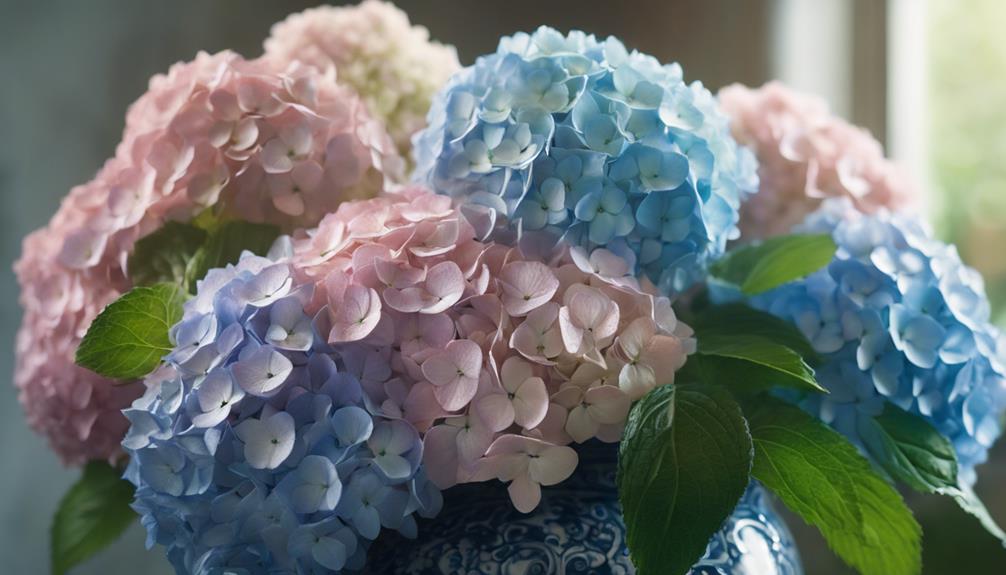
Using precise brushwork and careful color application, you can create stunningly realistic effects in your hydrangea artwork.
Start by using a fine brush to apply water to each petal before painting. This technique gives you better control and prevents unwanted color spreads. Focus on layering your colors; begin with darker tones and gradually add lighter shades. This method guarantees smooth shifts that mimic the natural look of hydrangeas.
To enhance the depth and luminosity, incorporate transparent yellow highlights on the edges of the petals. This small detail can make a significant difference, giving your artwork a vibrant, lifelike quality. Remember to regularly check your references for accuracy in color and shape. This practice will elevate the realism of your piece.
Taking breaks during the painting process is vital. It helps you maintain focus and control over the delicate details, guaranteeing a polished final result.
Practice and Future Projects
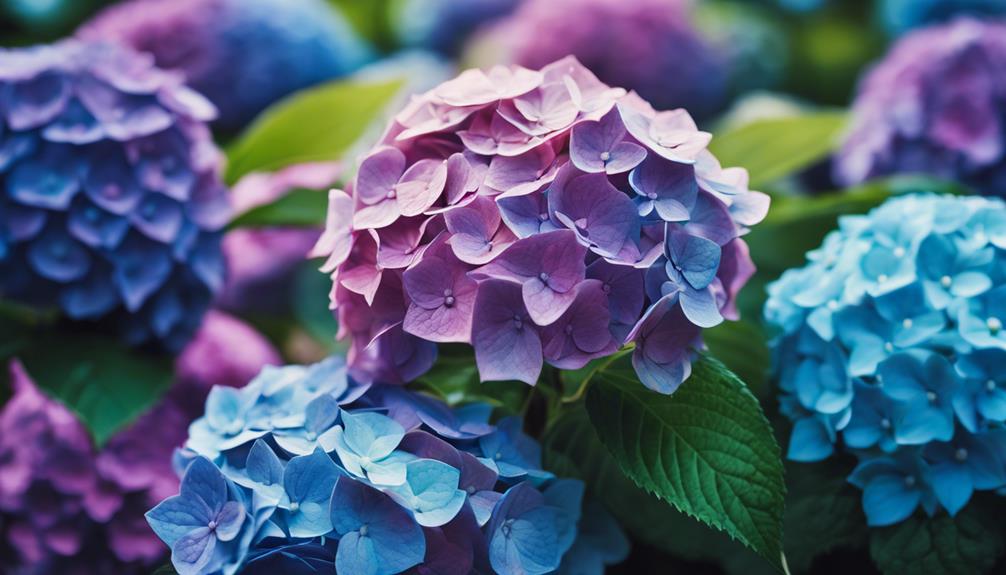
Practicing painting hydrangeas individually lets you hone your skills in capturing their delicate details and vibrant colors. Each petal showcases unique nuances, and by focusing on them, you refine your technique effectively.
To enhance your artistic journey, consider these tips for your practice sessions and future projects:
- Consistent Color Palette: Stick with a limited color palette, like permanent rose and manganese violet. This approach not only provides harmony in your work but also streamlines your decision-making process in future pieces.
- Test Color Mixes: Before diving into your main artwork, test color combinations on scrap paper. This guarantees that you're confident with the colors you'll apply and helps you achieve the desired effects on the hydrangea petals.
- Take Breaks: Don't underestimate the power of stepping away for short breaks. These intervals can refresh your focus and allow for more precise detailing, making it easier to make subtle adjustments in your artwork.
Conclusion
So, you've spent hours perfecting your hydrangea art, and now it looks so real you almost expect it to ask for water!
Who knew you'd create a masterpiece that could fool even the most seasoned botanist?
As you admire your work, remember: it's still just paint on canvas, not a garden in disguise.
But hey, if someone tries to water it, just smile knowingly; you've clearly mastered the art of deception—one lifelike bloom at a time!
